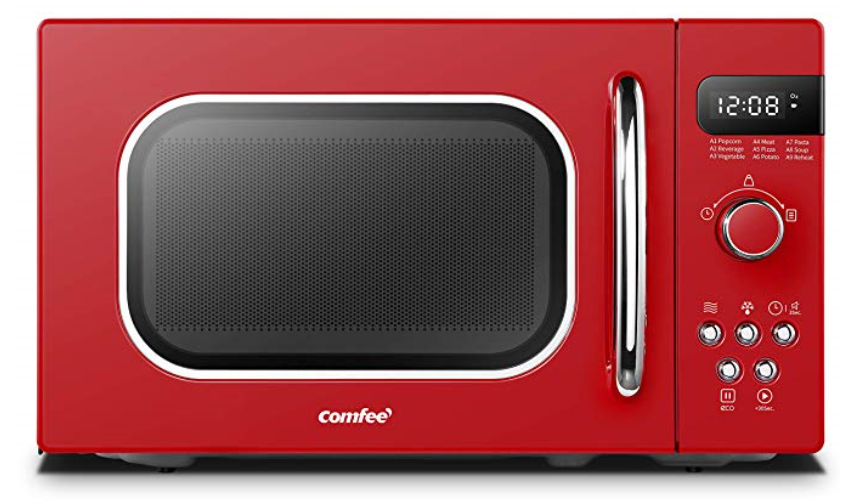If you’ve decided to purchase a new microwave, odds are you’re looking for a counter-top. If it’s an over-the-range or built-in model, you’re likely going to need a professional to install it, as well as purchase a model that is sized to fit the specs of your home.
While microwaves deliver between 600 and 1,200 watts, by default, most microwave-foods are designed to be cooked at a temperature of at least 800 watts. This shouldn’t be a problem with most modern microwaves however, new technology and features cook items faster and more thoroughly than before. That means no Gordon Ramsay screaming “Is it f***** hot?!” and sticking your finger in the middle of the plate.
In order to simplify the process, let’s focus on the size (internal capacity) and power (wattage) of the microwave to find out what type best suits your microwaving needs.
1. Compact
While a family may opt for a larger, more powerful model, a compact microwave should be enough for a single person or those who don’t plan on zapping their food too often. Perfect for college students or those reheating liquids.
Compacts should run you around $50-$75; at around 700 watts, the higher the wattage output, the higher the price is likely to be. With microwaves, wattage and size are the main two ingredients, with features and trinkets the icing on the cake.
In terms of size, compact microwaves are generally around 0.7 cubic feet (Cu.Ft.); these can fit most dinner plates but not much else.
2. Mid-Size
Mid-size or, approximately 1.2 Cu.Ft. is where most microwaves begin to lose the ‘cute’ look, going with more modern and sleek not unlike the first rendition of flat-screen TVs (your TV remote will not work with these).
At approximately 1,000-1,200 watts, everything should cook quickly and evenly and this a great point to start when looking for a microwave that is likely to be used by more than one person.
Most modern mid-size units come with some form of ‘inverter technology’ also, which helps to cook food evenly, rather than piping hot in the middle only.
3. Full-Size
Do you feel the need…the need for speed? In the 1.6 Cu.Ft. range, a full-size microwave is for families who aren’t too frugal about counter space. This size will also help to fit a multitude of larger dishes, as well as being able to handle consistent usage from all family members.
Running at around 1,250 watts, these units give a lot more specific options like pizza, popcorn, meat and potatoes. In the past you may have not been able to trust the presets, but now the ability to calculate weight inside the unit means a lot more thorough cooking for baking potatoes for example. Most often, you just need to enter the number of items you’ve put inside.
4. Large
While a large microwave remains in the 1,250 wattage range, the extra cost and ‘large’ moniker is due to the added size.
At 2.2 cubic feet, large models are for those looking to collect frequent-flyer miles, often using large, microwavable containers. Maybe you need to re-heat your meal prep, or maybe you’re an avid culinary artist. These microwaves start to get expensive at this size, and start to bleed into the $200 and above price range.
Be sure to get an accurate idea of how much counter-top space you’re looking to fill, and how often you’re looking to use your unit.
When thinking about replacing a microwave, look for any cracks or deficiencies; does the door close all the way with a proper seal? Is there rust? If there happens to be any strange noise eminating or, it simply isn’t cooking food thoroughly, it’s time for a new one.
Generally, every 10 years is the standard time to head to the store.
Have a suggestion for a cool product or great deal that you think Daily Caller readers need to know about? Email our BrightBulb Team at dealer@dailycaller.com.
The Daily Caller is devoted to showing you things that you’ll like or find interesting. We do have partnerships with affiliates, so The Daily Caller may get a small share of the revenue from any purchase.





